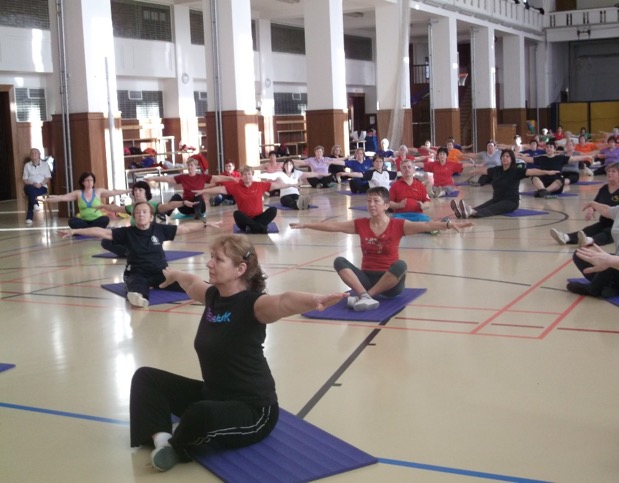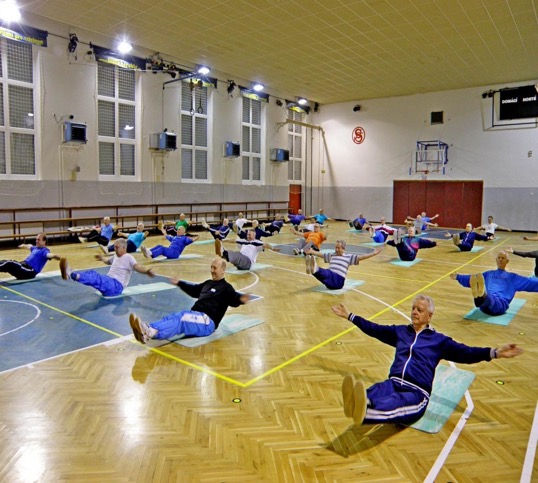History of Sokol
Sokol Utilized Various Facilities as they Established their Clubs
Sound Mind in a Sound Body
Democracy
Brotherhood Fellowship
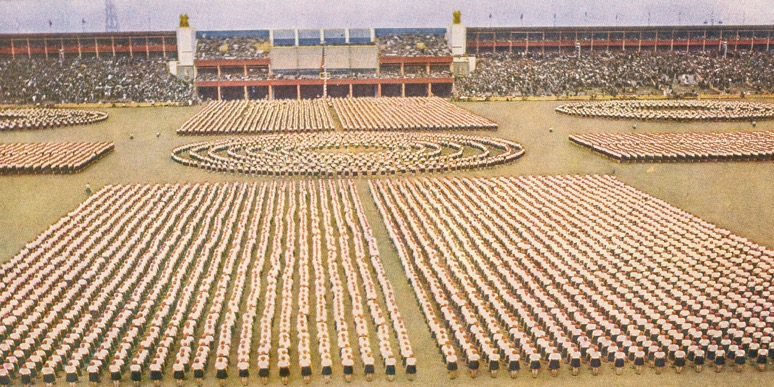
Ethnic Identity
Equality
Civic Responsibility
Czech Autonomy for two centuries (1306- 1525): Pre-Habsburg Rule and its role in eventual Czech freedom
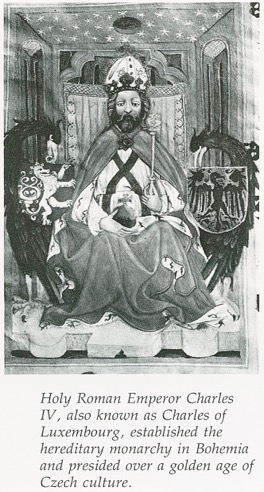
- Czechs (Bohemians and Moravians) enjoyed virtual self-rule, especially under King Charles IV who became a Holy Roman Emperor and developed the city of Prague.
- His reign (1346-1378) was during the “Golden Age of Bohemia.” Charles IV was appreciated and loved by the Czech people because of his patronage of learning and the arts, creation of jobs, his simple and pious lifestyle, and his tolerance and humanism. He founded Prague University (later named Charles University) the first university north of the Alps, and established Prague’s Newtown.
- In 1526, the Bohemian lands came under the rule of Ferdinand I of the Habsburg Dynasty, then in 1618 the Czechs of Bohemia revolted against the Austrian rule, but in 1618 were crushed in the Battle of White Mountain.
- This historical perspective is critical for understanding the Czech’s mindset, and their quest for independence. This history helped form the Czech’s philosophical mindset that led to the formation of the Sokol gymnastic movement, and the eventual establishment of Czechoslovakia in 1918.
Roots for the Sokol movement: a quest for a healthy, free, and democratic nation
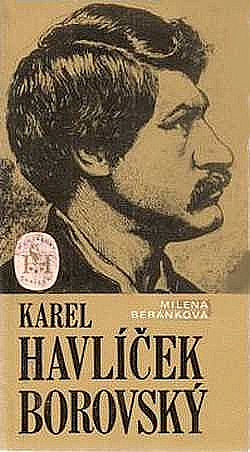
- František Palacký (1798-1876), a historian and politician, promoted the idea of a Czech Kingdom consisting of Bohemia, Moravia and Silesia, which would give Czechs their autonomy. Karel Havlíček Borovský followed Palacký’s writings and used his newspaper to speak out against absolute Austrian rule.
- Havlíček Borovský’s writings emphasized 1) morality in political, as well as private life, and 2) an ethic of diligent work and striving, rather than futile lamentations. He was arrested by the Austrian authorities, imprisoned and then exiled. His writings inspired many Czechs, including Miroslav Tyrš.
- Six years after Havlíček Borovský’s death, Tyrš, a philosopher, gymnast, and promoter of the arts, began his quest for a Sokol movement. He envisioned “a new race, stouter than its predecessors, a race that would recognize the rights of others.” His call was: “every Czech a Sokol.”
- Tyrš’ vision for his people was “a sound mind in a sound body,” which would develop character, discipline and cooperation, and lead to self-governance.
Miroslav Tyrš (1832-1884): German turned Czech
- Friedrich Tirsch was born in Bohemia, which was part of the Austrian Empire (see map), to a German speaking family. But he identified with Czech peasants, which awakened his Czech consciousness. He then changed his name to Miroslav Tyrš, consistent with his Czech identity. He was a renaissance man, a philosopher with a doctorate, a student of Greek culture and the ancient Olympics, a gymnast, and a lover of art.
- These qualities and background served him well in forming his concepts of the Sokol movement, which were based on the German Turnverein; he saw his system as an aesthetic display (art form) of fitness based on discipline, brotherhood, and equality that would inspire a Czech ethnicity and culture, and lead to nationhood. Equality was underscored by addressing members as “brother” and greeting them with “Nazdar” (to success). The values of strength, endurance and manhood were embraced by the Sokol motto: Tužme se (let us harden ourselves).
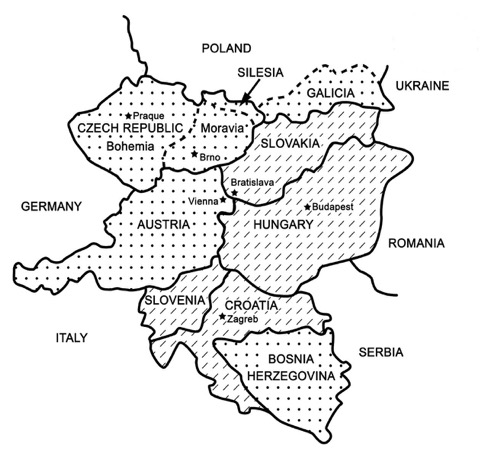
Prague 1862: First Sokol is Established
- Tyrš trained under the the German Turnverein system of gymnastics and adapted his Sokol system to fit with Czech ideals.
- He was active in two prominent gymnastics clubs: Malypetr’s and Schmidt’s; the latter was originally to be a German-Bohemian Gymnastic Institute, but money for the venture was limited to the German title, and Tyrš was then aided by the Czech, Jan Malypetr in his efforts.
- Jan Malypetr provided gym space, and Prague Gymnastic Club was established, and then became Sokol Prague, with its goal: “pursuit of physical training.”
- Jindrich Fügner, the club’s first president, played a key role in Sokol Prague philosophically and by providing the funds for the club’s building.
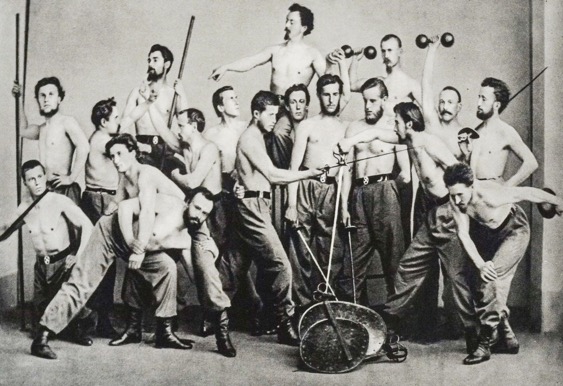
Sokol Prague (Sokol Pražský) the First Club
The club was formed on February 16,1862 in the Institute of Malypetr, a gymnasium that Sokols then utilized during the club’s first year. Members did not need to be recruited, because training and membership in a club with Czech values was in demand. Jindřich Fügner, who became the club’s first president provided the finances for the new Sokol Prague building. It opened in 1863 and is still utilized. The building features a gymnasium, large adjacent halls, and rooms for concerts, dramas and dancing.
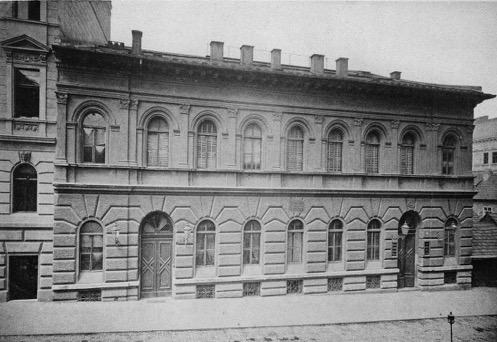

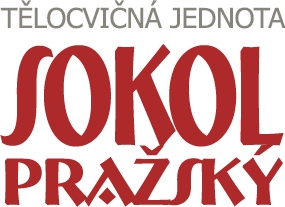
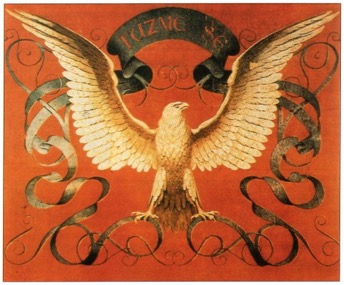
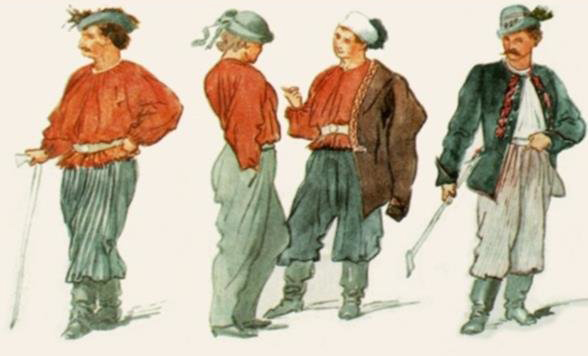
Grand Sokol Flag (painted by famous artist Josef Mánes) Ceremony 1862
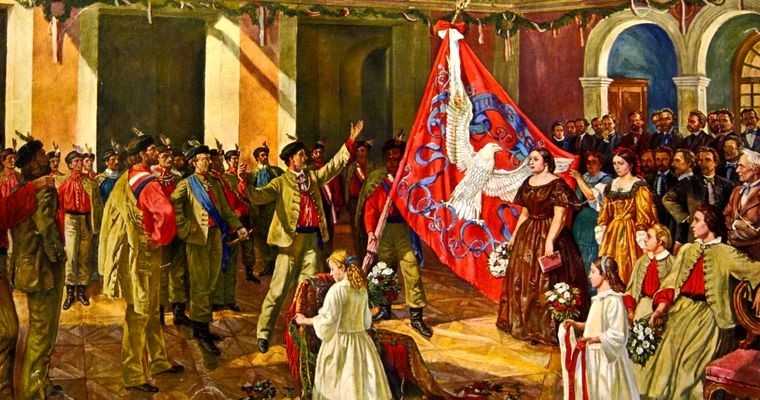
1864 Lithograph

Influences of Greek Culture and Darwinism on Tyrš’ Sokol Philosophy
- In Greek culture the term “Gymnastics” included all forms of exercise. Moreover, the ancient Olympics originated in Athens. Tyrš admired ancient Greek culture, especially Plato’s view that the main features of Greek character are “love for gymnastics and love for wisdom,” and that “gymnastics was an intimate part of Greek education and life.” Tyrš’ 1868 book (“Olympic Feast”) was an ode to Greek arts and sports.
- Tyrš noted that beauty, strength, grace and usefulness do not preclude one another, therefore, every movement must have aesthetic value. He wanted Sokol to animate artistic creation and a democratic organization.
- The principle of Darwin’s theory of evolution, that fitness is key to survival, matched Tyrš’ Sokol principles regarding strength, activity, perseverance, and discipline. He then adopted Darwin’s teachings regarding animal science to that of national survival. He noted that if a nation is to survive, it must consist of individuals that are strong, active, and fit. If a nation is small, then its level of activity must be high, to enable it to become an important member of humanity. Tyrš contended that a Sokol is a blend of physical attributes with aesthetic and moral values.

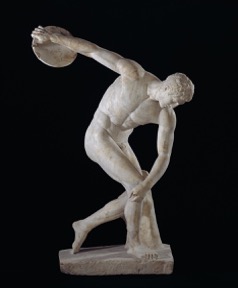
Sokol: “a healthy mind in a healthy body.”
- In 1872 Tyrš published his book: “Basis of Gymnastics.”
He divided his fitness program into four categories: 1) free on the floor, 2) using an apparatus, 3) in a group (pyramids), and 4) combat sports. He later included track and field, swimming, fencing, and other sports.
- He stressed 5 principles: 1) strength and manhood, 2) activity and endurance, 3) devotion to freedom of the motherland, 4) voluntary work and discipline, and 5) fraternal relationships of Sokol members.
- Tyrš developed terminology, descriptions of exercises, which constituted physical education programs in schools. He also published club rules, and art books.
- Because of the need for ethnic security and freedom, Tyrš received permission to initiate a military training program.
Basis of the Sokol Program: Strength in Unity
The drawing below includes both the falcon, symbolizing Sokol and the lion, symbol of strength and the Czech nation. The illustration was associated with a melody, “Lion’s Strength and the Festive March of the Sokols.”
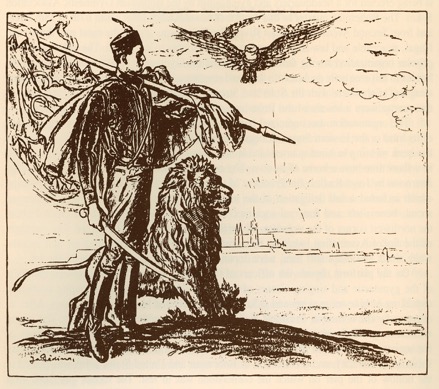
Sokol: Miroslav Tyrš’ Cause for Czech People
- 1862: Sokol Prague was established by Tyrš and his future father-in-law, Jindřich Fügner, with the aid of leading Czech patriots. By year’s end, 8 more Sokol clubs were established. Dr. Tyrš, created a nomenclature for his gymnastics system. His Sokol method of training emphasized “a sound mind in a sound body,” the Czech identity, equality of people, democracy, and morality. He wrote extensively concerning responsibility and national values.
- 1865: The first Sokol club formed in the US was in St. Louis. Clubs were established in Poland, Croatia, Serbia and Slovenia in 1863, within a year after the founding of the Sokol Prague.
- 1871: Sokol clubs numbered 114 in Bohemia and Moravia and included 9,304 members. By 1910 these two Czech provinces had established 916 clubs with 68,032 members
- 1889: Česká Obec Sokolská (Czech Union Sokol) was organized 5 years after Tyrš’ death. Sokol men competed in their first international competition in Paris and won 3 first places.
- Tyrš left a monumental legacy, namely he raised the Czech people’s awareness of their ethnicity and awakened their hopes for independence.
Miroslav Tyrš (1832-1884) and Jindřich Fügner (1822-1865) collaborated to establish Sokol in 1862
- Tyrš, a German raised in Bohemia, experienced poor health during his youth. To counter his physical problems, he turned to gymnastics. At the same time, his life and friendships in Bohemia caused him to feel a Czech identity and sympathy for the Czech’s quest for independence. As a philosopher he valued the history of the Czechs, their culture and their determination. Training in a German club, Tyrš was impressed with the German gymnastics program, developed by Friedrich Ludwig Jahn, and its role in both fitness and its nationalistic character. He then utilized the Turnverein program of gymnastics as a model for a Sokol movement based on Czech culture and democratic ideals. Tyrš also admired early Greek culture, and the original Olympics. His broad concept of Sokol was that of an ideal man who would help the Czechs in their quest for a just and free nation.
- Fügner had traveled extensively, and was a very wealthy sportsman, with a broad perspective on life. He was modest, diligent and honest, and stressed equality and brotherhood, which spoke to the downtrodden Czech masses. By welcoming highly educated men, peasants, laborers and artists, Fügner fostered a true diversity in the Sokol community, an important goal and necessity of the Sokol movement.
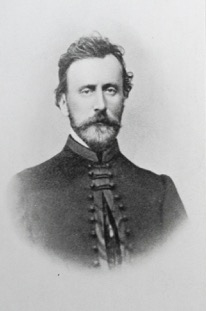
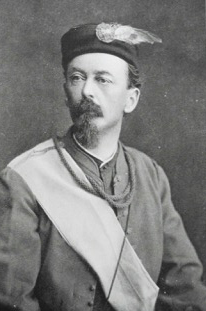
19th Century Chronology of the Sokol Movement in the Czech Lands (Bohemia & Moravia)
1862: Sokol Prague becomes the first Czech gymnastic club; then 8 more clubs are formed by the end of 1862.
1865: Pražský (Prague) Sokol establishes Gymnasium Institute for Boys and Girls.
1869: Pražský (Prague) Sokol establishes Gymnasium Association of Ladies and Girls.
1880-1900: Sokol training is introduced in school physical education programs.
1882: First Sokol Congress and All-Sokol Slet (Gathering or Rally); Slets included mass exercise displays, competitions in gymnastics and other sports, parades, and cultural events (e.g., operas).
1884: Sokol founder Tyrš dies while in a rehabilitation center; his death was due to drowning.
1889: Czech Union Sokol (Česká Obec Sokolksá) is formed.
1895: Youth is included in the III Slet for the first time.
1897: Czech Union Sokol encourages their clubs to establish training for women and adolescents.
20th Century Chronology of the Sokol Movement in the Czech Lands
1901: Women (totaling 876) performed in a Slet for the first time, with 6,705 men and 1,600 juniors.
1907: First World Gymnastics Championship in Prague; Czech men win gold and bronze.
1909: Czech Catholic Sokol clubs united in a national organization, Orel (Eagle).
1914: Resolution granting women full membership in Sokol. Sokol disbanded by Austrian authorities.
1914-1920: Sokol plays a key role in formation and effectiveness of Legionnaires During WW I.
1920 Sokol reorganized in the new Czechoslovakia, with an emphasis on social justice.
1926: Slet (Rally) in new Strahov 135,000 capacity stadium; winter sports added to competitions.
1930: Czech Sokol membership reaches 352,888, with 25% of members active in gym classes.
1930s: Czechoslovak (Sokol-trained) gymnasts win numerous international competitions (Golden age of Sokol).
1941: Sokol disbanded during Nazi occupation.
1945: Sokol reestablished in 1945; but disbanded in 1952 by the Communist Government.
1990: Sokol reestablished.
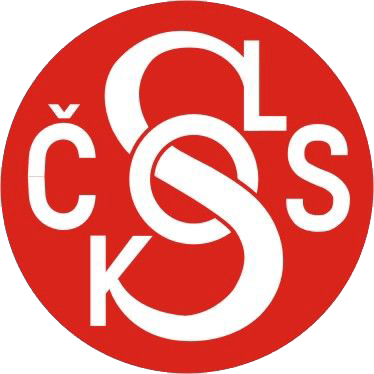
1889 Czech Sokol becomes a National Organization
- 1889: The Austrian government finally permitted a Czech Union Sokol organization (ČOS). Sokol gymnasts competed in an international meet in Paris and won three first places.
- 1892: Sokol Clubs (numbering about 50) in Moravia & Silesia formed a Sokol society.
- 1904: Moravia-Silesian society joins ČOS; by 1905, the union boasts 662 clubs with over 50,000 members.
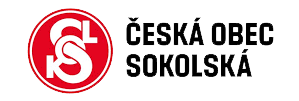
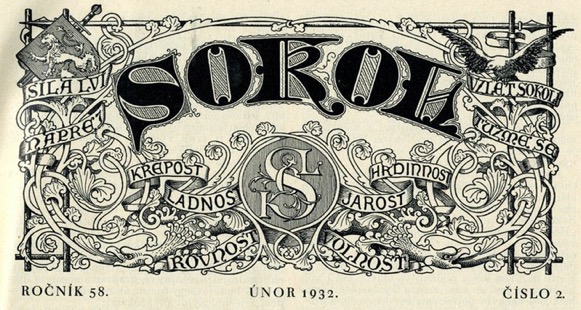
Sokol Growth Surges in the last Decades of 19th Century
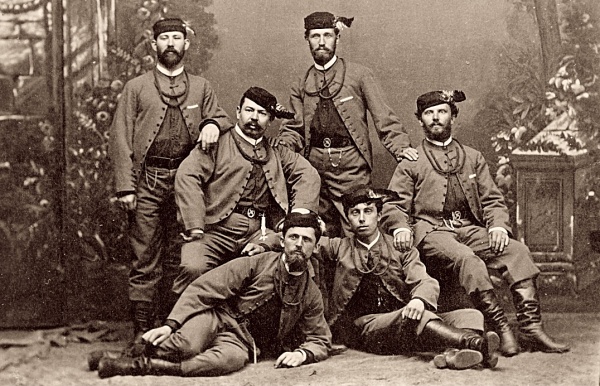

Sokol flag and insignia
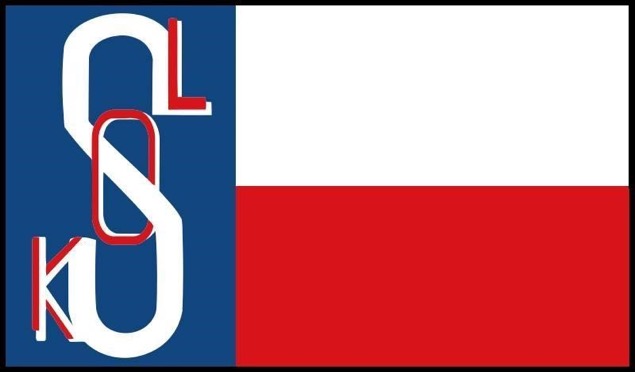
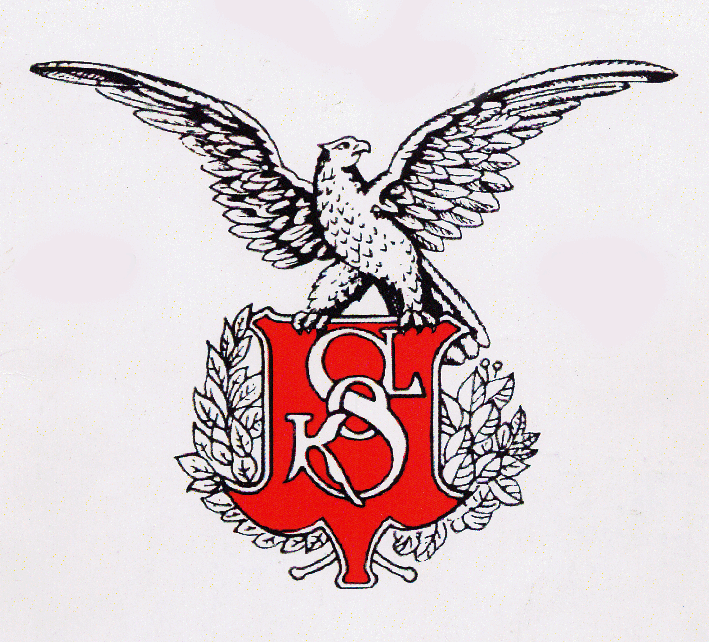
Masquerade Ball (Šibřinky)
This tradition was celebrated in early-established Sokol clubs, as depicted in this drawing by artist Mikuláš Aleš (circa 1865). The tradition continued into the 20th century (even in the US).
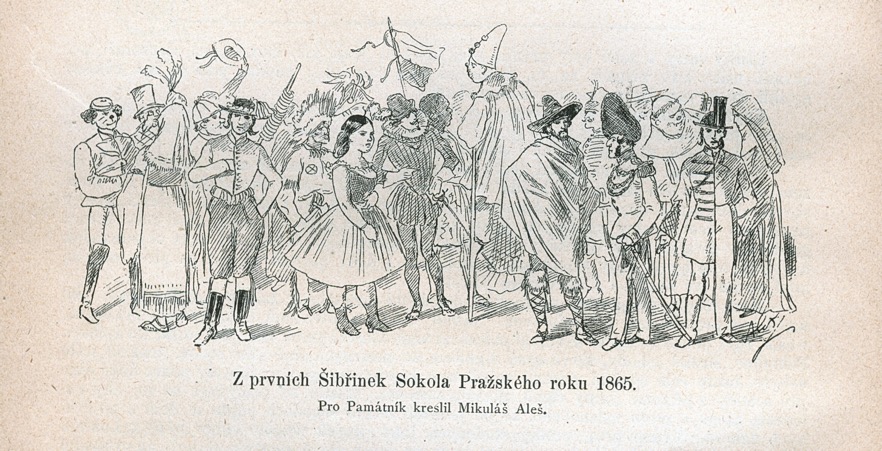
Josef Scheiner (1861-1932), Tyrš’ successor and Sokol leader from 1887-1919
- Josef Scheiner edited Sokol publications after Tyrš death and wrote Tyrš’ biography.
- He helped form the Czech Union Sokol in 1889.
- During his period of leadership, Sokol spread to other Slav countries.
- He worked with the Czech underground (Czech Mafia) during World War I, and aided President Masaryk in the formation of Czechoslovakia.
- Two of his other key contributions were: 1) his emphasis on the role of Sokol as an apolitical and democratic organization, and 2) his leading Sokol into the International Gymnastics Federation.
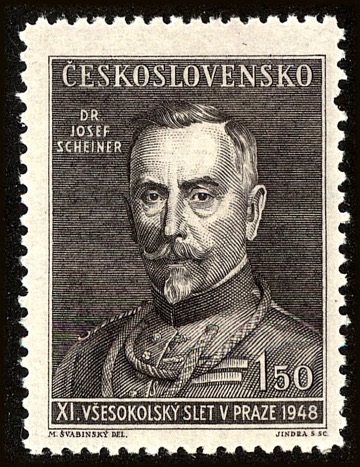
Women and the Sokol Movement
- Although women and girls had a gymnastic club in Prague in 1869, men resisted women’s equality in Sokol, a view consistent with the times and culture.
- After the establishment of a national Czech organization, Czech Union Sokol (Česká Obec Sokolská) in 1889, training sessions for women and adolescents became a reality. Yet it was not until 1920 that women marched in Sokol parades as men’s equals and were given authority over their participation.
- Tyrš’ wife, Renata Fügnerova-Tyršova (photo: Czech Union Sokol), Fügner’s daughter, was a role model for women, as she fought for their rights, as well as the welfare of children and their education. She was active in several national organizations, including Sokol. Both she and her husband were supporters of the fine arts. After she was widowed, at the age of 30, in 1884, she maintained her husband’s legacy and continued her humanitarian activities and support for the arts. She died in 1934 .

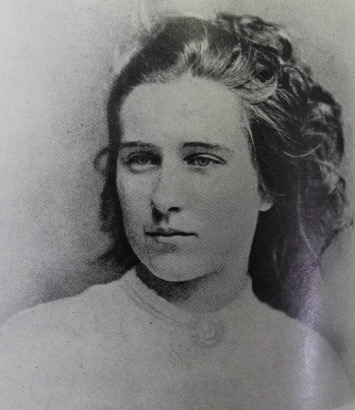
Sokol Gymnastics rapidly gains favor in Bohemia and Moravia
- Sokol Prague, established in 1862, had 807 members by its 5th year of existence.
- By the end of 1862 there were 19 clubs in Bohemia and Moravia, and in 1871 there were 114 Sokol clubs in existence.
- The impressive degree of enthusiasm for Sokol fitness training is evident by the fact that membership exceeded 12,000 by 1883.
- The number of members increased from 52,169 in 1902 to 119,183 in 1912. This large growth in membership was largely due to the inclusion of women beginning in 1889.
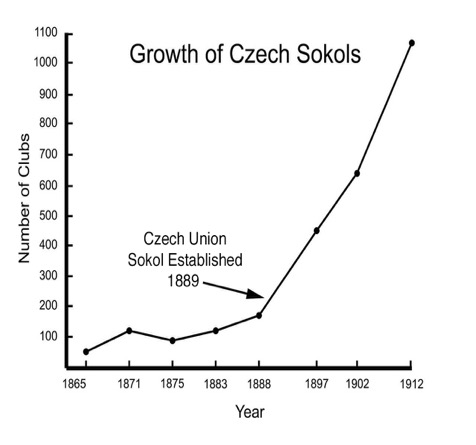
Sokol Becomes International
- Sokol clubs were also formed in other Slavic countries, e.g., Slovenia (1864), Russia (1870), Croatia (1874). Sokol in the US began in St. Louis in 1865, just three years after the first club was established in Prague in 1862.
- Ties between the Czech and American Sokols were especially close, because Americans were Czech immigrants. The poster shown here illustrates the ties between the two Sokol organizations separated by the Atlantic Ocean. Published in 1887, the poster greets the American Sokols for a gymnastic competition in the city of Česky Brod, a year when the Austrian Government forbade the Sokol Slet scheduled to be held in Prague. By 1887 there were 25 Sokol clubs in the US and about 165 in Bohemia and Moravia.
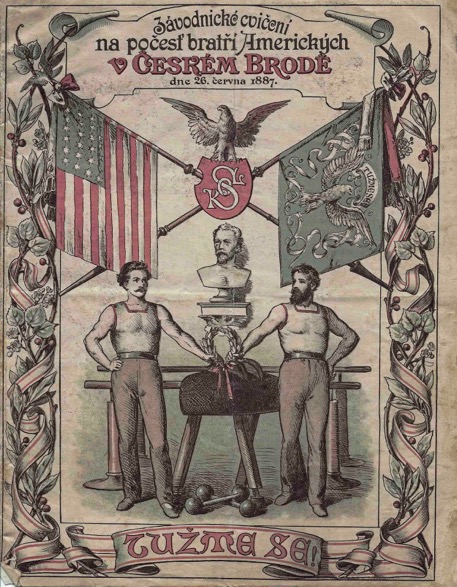
Marie Provazníková (1890-1989) Legendary Sokol Leader and Innovator
- Promotor of gymnastics and physical education; she was a professor at Charles University, Prague, and she developed women’s programs and wrote many books. She was Czech Sokol Director of Women from 1931-1948. At the 1938 Slet she directed 30,000 women performing in unison on the field.
- Founding member of Fédération Internationale de Gymnastique (FIG), she was elected president in 1946.
- Organizer of 1948 Women’s Olympic gymnastics competition in London, she led the Czechoslovak women’s team that won the gold medal.
- Provazníková was the first person to defect from the Olympics; she did so because she feared reprisals from the Communists in her country.
- She spent the rest of her life in the US contributing to both gymnastics and physical education, as a member of Sokol New York.
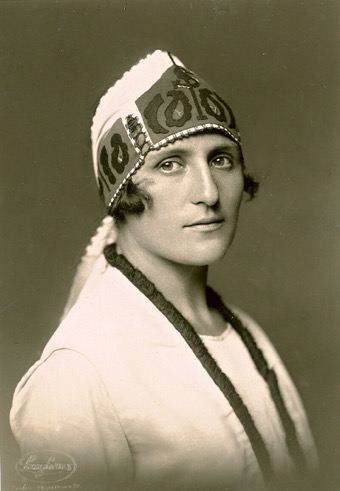
Training Sokol Instructors: a key program for maintaining quality Sokol gymnastics classes
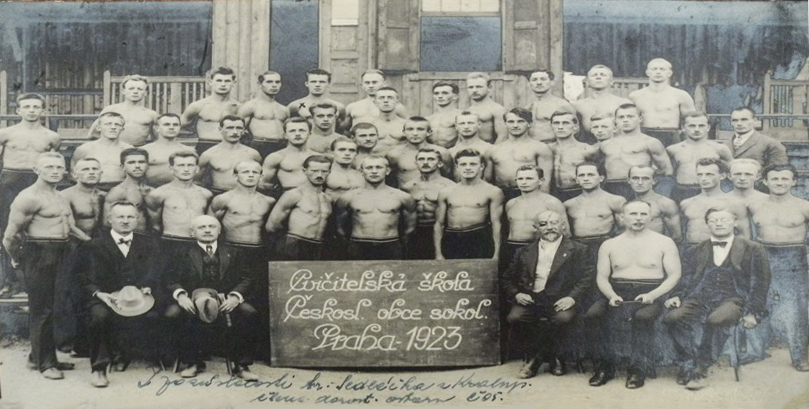
Other Sports included in Sokol Slets during the Post World War I Period
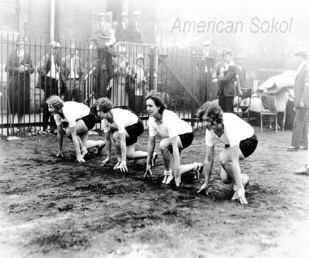



Examples of some Czech Sokol Halls built before 1885
- Sokol Česky Brod was established in 1870; their building (top photo) opened in 1884. Note the gymnasium’s elaborate, interior artistic decor (bottom right photo).
- Sokol Kolín (bottom left photo) was established in 1862, the year Sokol Prague, the first club was organized. The building in the photo was opened in 1878 and is still utilized.
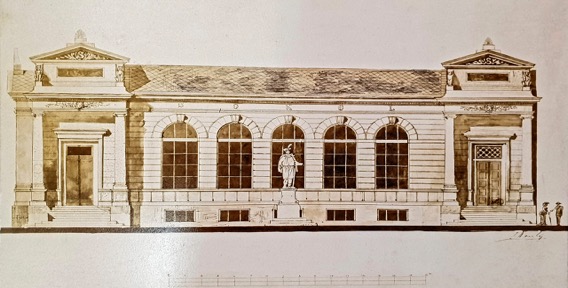
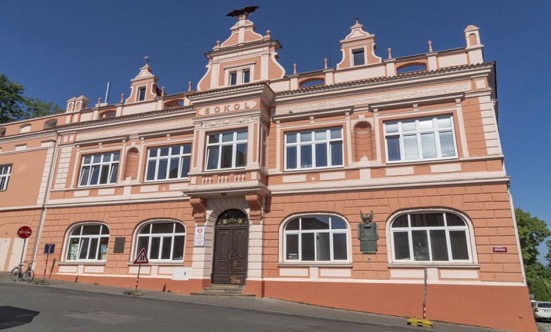
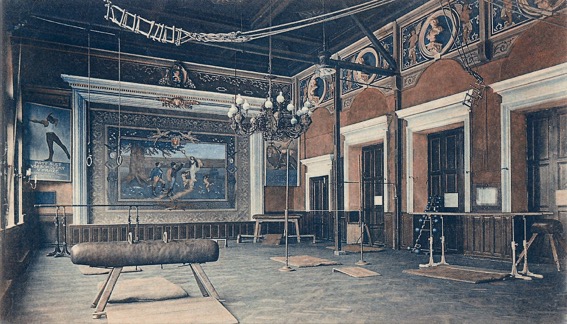
Two Sokols in Southern Bohemia
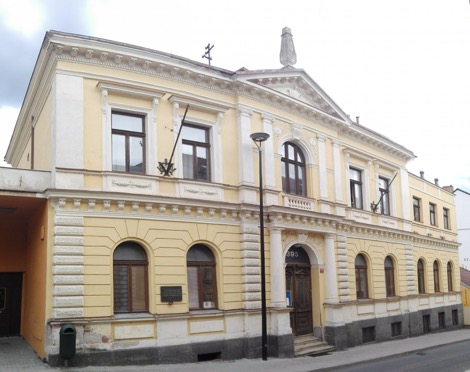
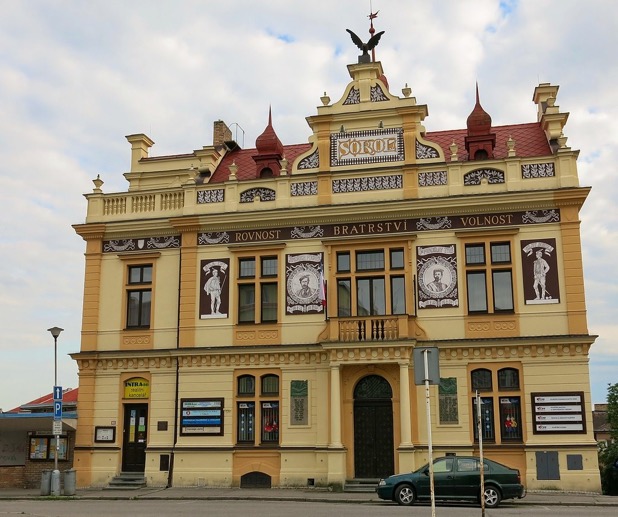
Czech Union Sokol becomes Czechoslovak Union Sokol
1918: Slovaks Join Czechs (Bohemians, Moravians and Silesians) in a new country, Czechoslovakia.
- Although there were Slovak Sokol Clubs in the US since 1896, Hungarian authorities in Slovakia did not allow Sokol.
- With the establishment of Czechoslovakia, the Czechs encouraged formation of Sokols in Slovakia (first Slovak Sokol club was formed in 1918), however the movement was quite limited. One reason was the fact that Slovaks had not been exposed to 56 years of Sokol like the Czechs and had not experienced the historical roots of the Sokol movement.
- However, the experiences of World War I and the legionnaires, who were closely associated with Sokols, and the fitness aspects of Sokol training, were factors that brought Slovaks to the Sokol ranks.
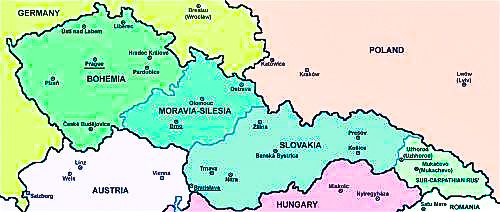
Sokol in the first Czechoslovak Republic
Hungarian Empire
Slovakia
Austrian Empire
Bohemia & Moravia
Czechoslovakia established in 1862
Tyršův Dom (Tyrš’ House) – Czech Sokol Headquarters in Prague
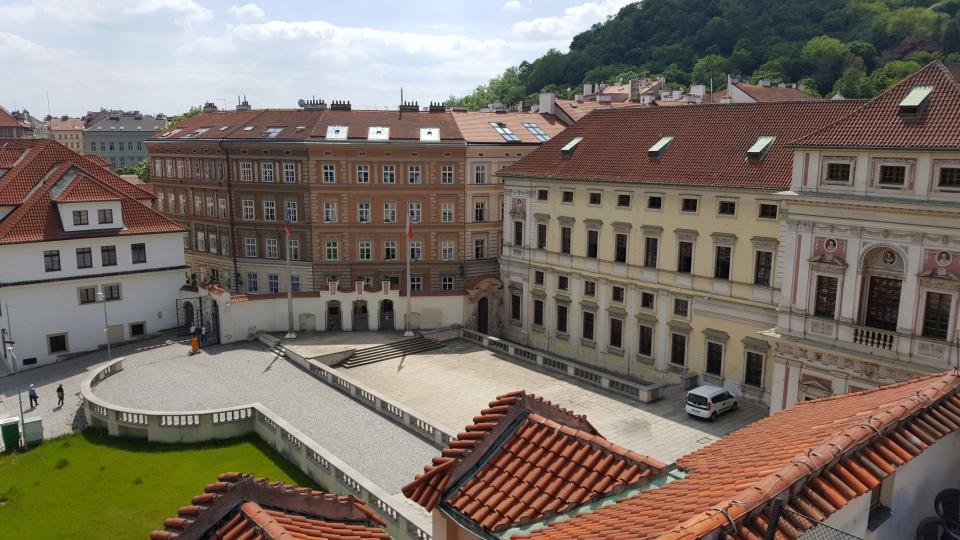
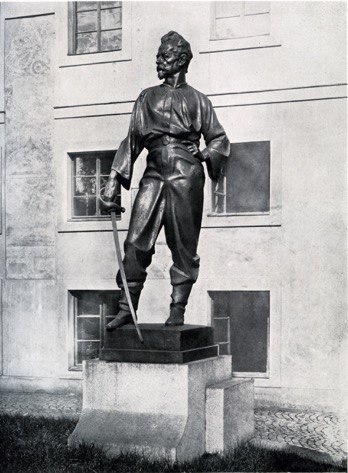
Tyršův Dům (Tyrš’ House)
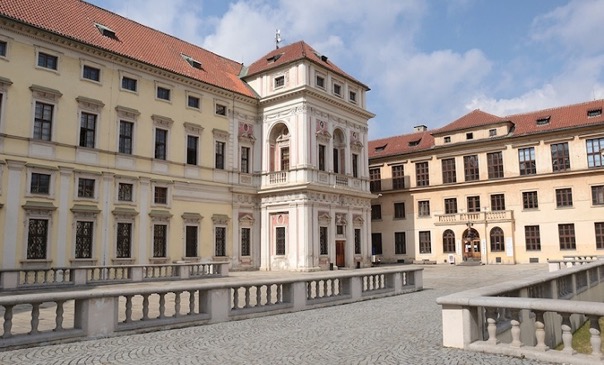
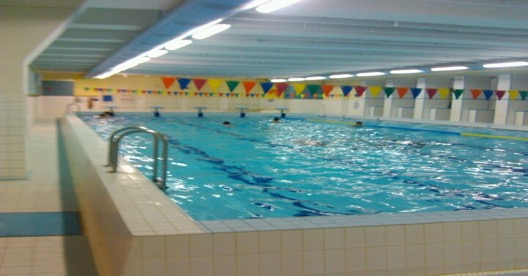
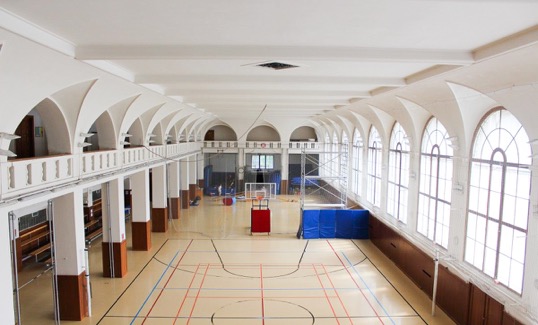
Bohemia and Moravia become a Protectorate of the German Reich in March 1939
- Heydrich then had numerous Sokol leaders arrested, imprisoned or killed (discussed in section “Sokols in World Wars I and II”).
- Czechoslovak President Edvard Beneš (a Sokol member) was in exile in London and helped train paratroopers who threw a bomb into Heydrich’s car on May 27, 1942. The injuries caused his death one week later.
- One of the two executioners was Josef Gabčík, who, like many in the resistance movement, was a Sokol member.
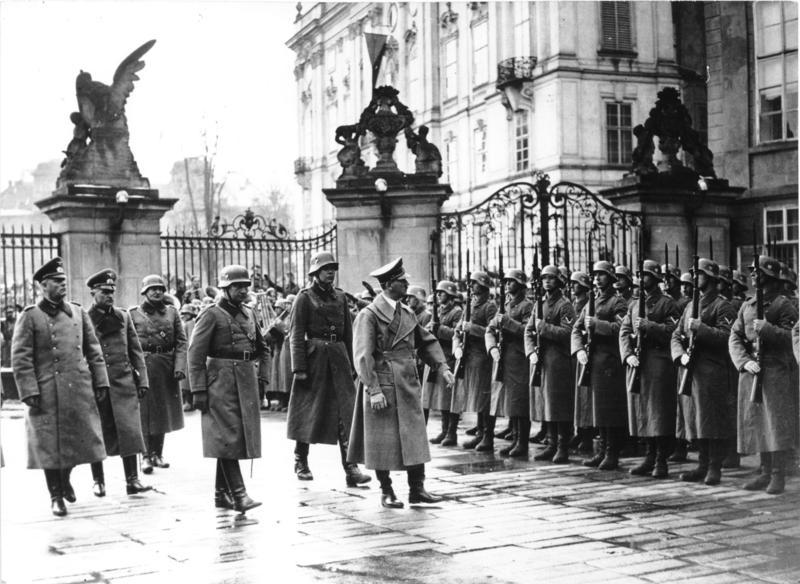
1945 – 1948: Sokol is Briefly Reestablished
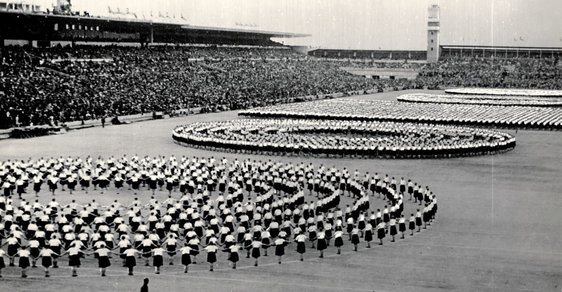
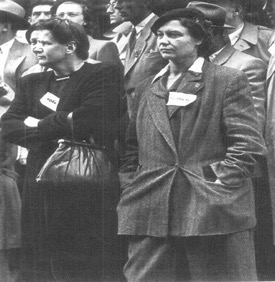
Sokol-Trained Czechoslovak Olympic Teams: 1948 Olympics
- Women’s gymnastic team (photo below) won the gold team medal. The US women’s team placed third in the gymnastics competition. Ladie Bakanic of Sokol New York was a member of the US team.
- Members of the men’s team won 3 bronze medals: Zdeněk Růžička (right photo), rings and floor exercise; Leo Sotornik, vault.
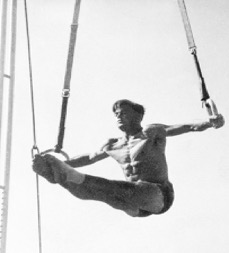
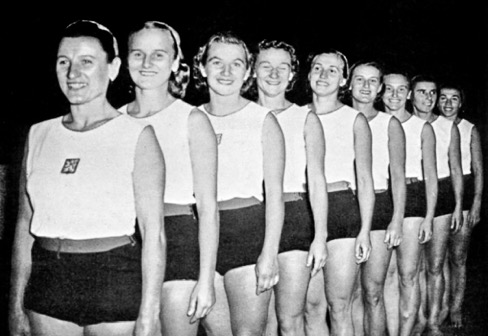
- Marie Provazníková, Czech Sokol Women’s Gymnastics Director and President of FIG (the international gymnastics organization) brought the Czech team to London. She defected, because of the Communist take-over in Czechoslovakia and emigrated to the US.
- Eliška Misáková, a member of the Czech team died of polio in London and was replaced by Věra Růžičkova (second from left in photo), who’s scores helped the team’s victory.
- The team returned to Prague with the gold medal, without their leader, Provazníková, and with an urn bearing the ashes of their teammate.
Democracy and Sokol 1945-1948 is Replaced by Communism and Soviet Rule
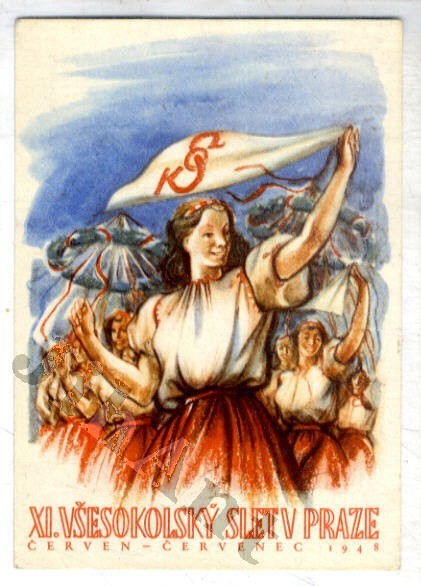
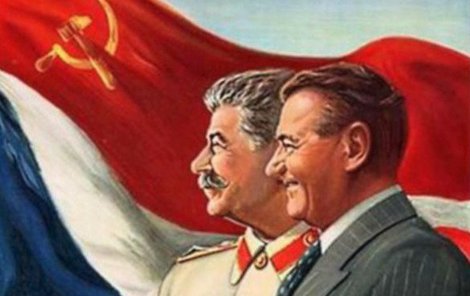
1990: Czech Sokol is Re-established

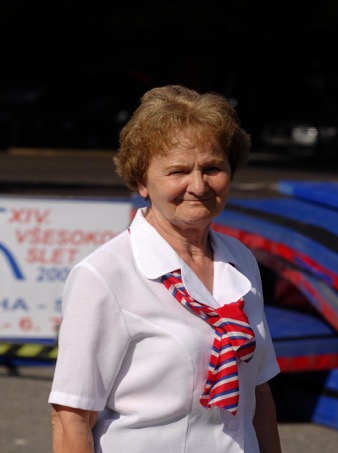
- Although individual Sokol clubs (units) began opening in 1990, they were limited by difficulties in regaining lost property.
- Help in training gymnasts came from some champions of the past, like Věra Růžičková (1928-2018), seen in the photo from Czech Union Sokol. She was a national diving champion at age 16, and a member of Czechoslovakia’s gold medal Olympic Women’s gymnastic team in 1948.
- Post 1990 Czech Sokol programs became very diverse – a broader sports and fitness organization – offering ball games, non-traditional sports and games, yoga, martial arts, and track and field, in addition to artistic and rhythmic gymnastics, and physical fitness for adults .
- Folklore, theater, music, dance and puppetry were preserved.
- In 1994, a World Sokol Federation was formed via the Czech Ministry of the Interior.
Re-established Czech Union Sokol (ČOS): Offers a Diversity of Programs
1. Sport for everyone: programs for the development of movement skills (speed, strength, dexterity, coordination and endurance). Activity classes are by age groups. ČOS offers 57 sports.
2. Performance sport: Sokol embodies all sport competitions within the organization and internationally.
3. Educational Department: cultural, social, historical & educational activities. Includes theater, and puppetry.
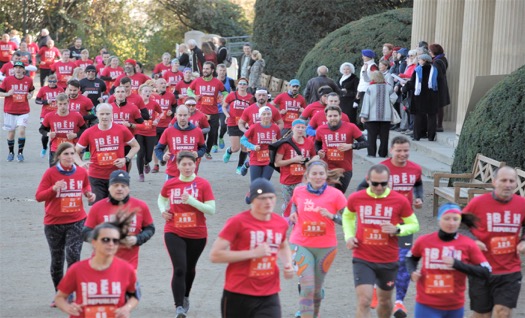
4. ČOS Central School: courses, training, advanced training, and seminars.
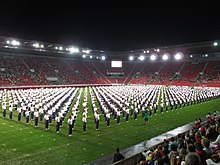
21st Century Czech Union Sokol Photos
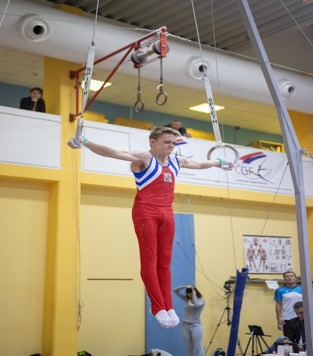
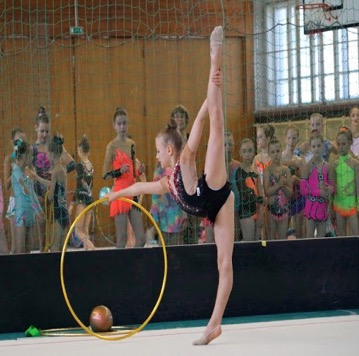
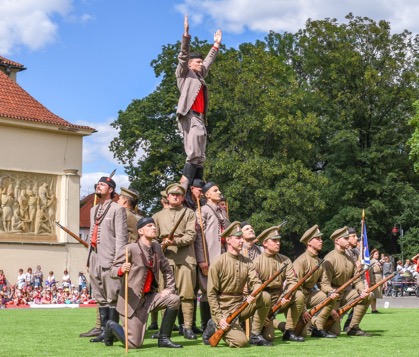
Young Czech Sokols competing in artistic (top) and bottom left and middle), and rhythmic gymnastics (right bottom) (photos: Czech Union Sokol)
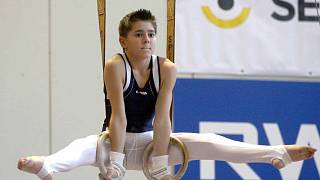
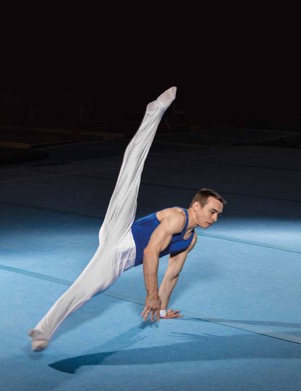
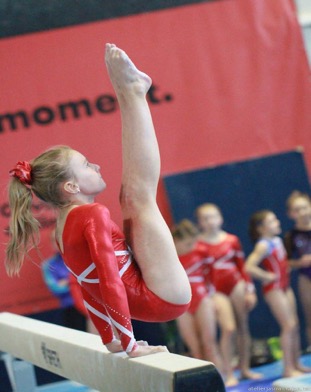
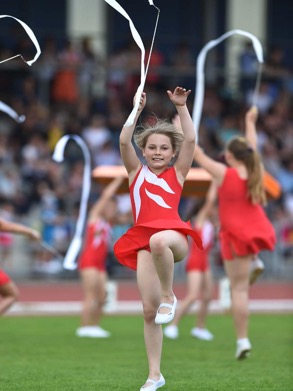
Sokol Exercise Classes for Adults in the Czech Republic
